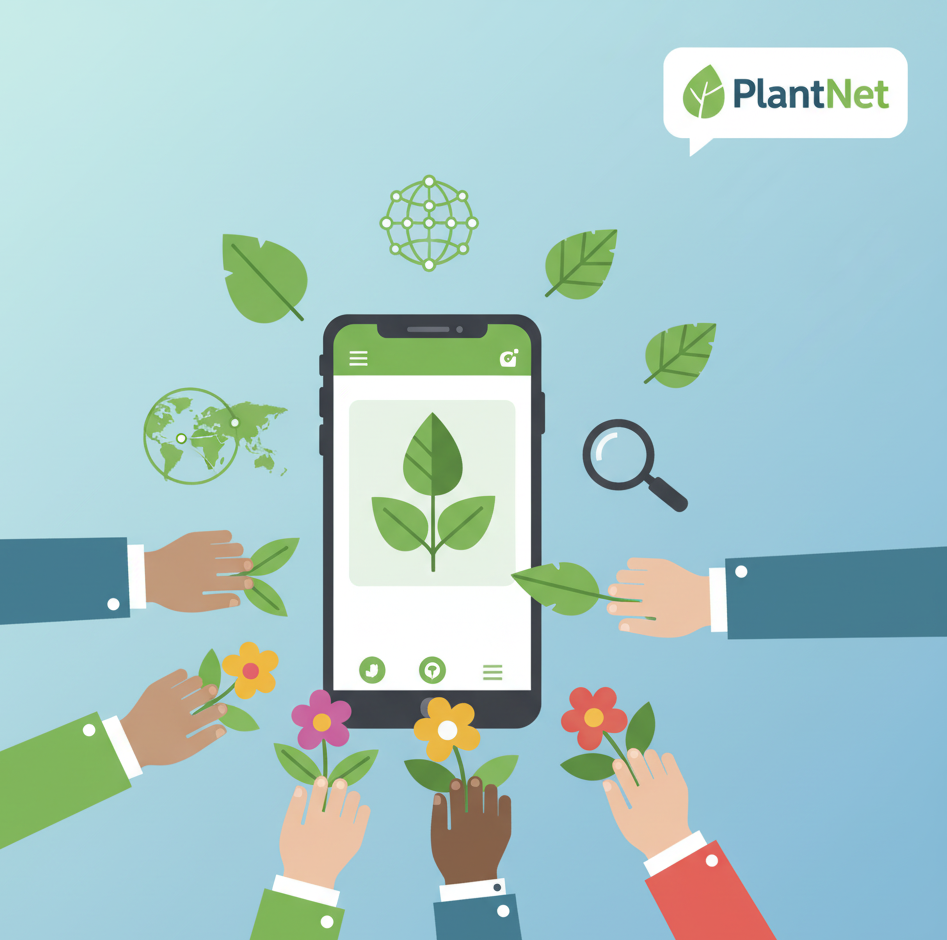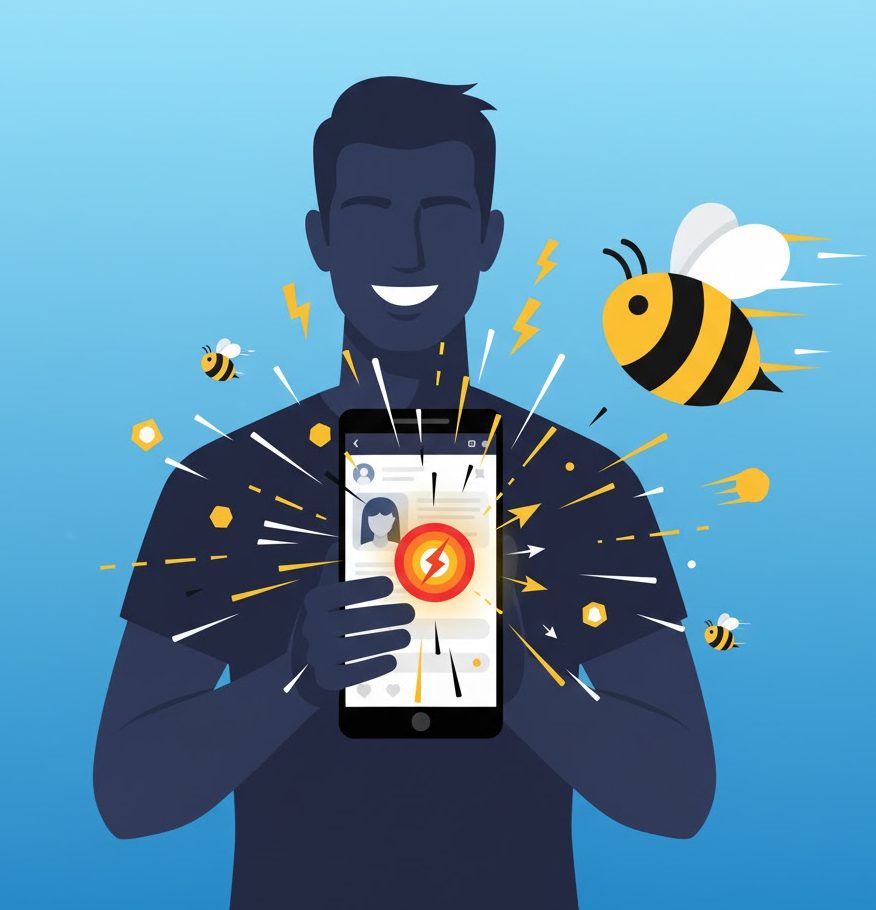In our fast-paced world, the ability to obtain instant information has become part of our daily lives. We use apps for everything: to navigate the city, to translate languages, and even to count stars. In this context, curiosity about the natural world has also found a powerful ally in technology. How many times have you come across an intriguing plant while hiking and wondered its name and history? Thanks to identification apps, this discovery is now in the palm of your hand. They function as true pocket botanists, ready to decipher the flora around us.
While there are several options on the market, some stand out not only for their technology but also for their philosophy. This is the case with PlantNet, an app that goes beyond simple identification and invites each user to become part of a global scientific project. It's not just a tool, but a gateway to the fascinating world of citizen science. For those who want to explore this powerful and free platform, this article will serve as a primer. complete guide to application PlantNet for Beginners. Let's detail how it works, its differences, its resources and how you can take your first steps towards not only identifying plants, but also contributing to the conservation of global biodiversity.
What is PlantNet and What Makes It Different?
PlantNet is much more than a simple plant identification app. It is, at its core, a citizen science research project on plant biodiversity. Developed by a consortium of French scientists and research institutions, including CIRAD, INRAE, Inria, and IRD, the app has a dual goal: to provide a free and effective tool for the public and, at the same time, to collect botanical data on a global scale for scientific purposes.
The key difference between PlantNet and many of its competitors lies precisely in this collaborative approach. While other applications may function as a closed service, PlantNet operates as a community. Each photo a user submits for identification becomes an "observation" that, once validated, feeds a massive database. Consequently, this data is used by researchers to study plant distribution, monitor invasive species, understand the effects of climate change on flora, and much more. Therefore, by using PlantNet, you're not just satisfying your own curiosity; you're actively contributing to science.
Citizen Science as a Pillar of the Project
The concept of "citizen science" is the soul of PlantNet. It's based on the idea that ordinary citizens, without needing an academic background in biology, can participate in real scientific research. In the case of PlantNet, this participation occurs through the act of photographing plants. The platform combines artificial intelligence, which makes the first identification suggestion, with the collective intelligence of the community, which can review, confirm, or suggest corrections to observations. In this way, the system's accuracy is constantly improved, and the database becomes increasingly robust and reliable.
How Identification Works in PlantNet: A Step-by-Step Guide
For beginners, the identification process in PlantNet is quite intuitive. The app's design is straightforward and functional.
PlantNet Plant Identification
Android
Downloading and Configuring the Application
First, download the PlantNet app, which is available for free on iOS and Android. After installation, there's no need to create an account to perform basic identifications, making initial use very quick. However, creating an account is highly recommended to save your observations and actively participate in the community.
Capturing the Perfect Image
The quality of your photo is the most important factor for accurate identification. Unlike apps that attempt to identify a plant from a general photo, PlantNet prompts you to focus on a specific part. For best results:
- Focus on one organ at a time: Don't try to capture the entire plant in the frame. Get closer and take a clear photo of a leaf, flower, fruit, or the trunk (bark).
- Neutral background: Try to isolate the plant organ from a cluttered background. Use the sky, a wall, or even a sheet of paper to create contrast.
- Good lighting: Use natural light whenever possible and avoid harsh shadows that can hide important details.
Selecting the Plant Organ
After taking or choosing a photo from your gallery, PlantNet will ask a crucial question: "Which plant organ is in the photo?" You'll have options like "Leaf," "Flower," "Fruit," and "Bark." This step is crucial because it directs the AI algorithm to compare your photo only with matching images in its database, dramatically increasing the accuracy of the analysis.
Analyzing and Confirming the Results
Within seconds, PlantNet will display a list of possible species, each with a confidence level. The app will display the plant's scientific name and common names, accompanied by several reference photos. Your task is to visually compare your plant with the provided images to confirm the correct match. This visual comparison process is an essential part of Complete Guide to the PlantNet App for Beginners, as it teaches the user to observe botanical details.
Exploring Additional PlantNet Resources
PlantNet is a tool rich in features that go far beyond simple identification. Exploring these additional features can completely transform your experience.
Geographic and Thematic Projects
One of PlantNet's most interesting features is the ability to contribute to specific "projects." These projects can be geographic (e.g., "Flora of Tijuca National Park") or thematic (e.g., "Useful Plants of the Amazon"). By selecting a project, your observations help map the biodiversity of a specific area or plant group of interest, making your contribution even more targeted and valuable to local researchers.
My Observations: Your Digital Field Diary
All identifications you make are saved in the "My Observations" tab, as long as you have an account. This section functions as a personal field journal, recording the plant you saw, the date, and the location. It's also a great way to track your discoveries, revisit plants you've already identified, and build your own catalog of botanical knowledge.
Navigating and Learning from the Community
The app features an interactive map and a feed where you can explore observations made by other users around the world or near you. This is a fantastic tool for discovery. You can see which plants are common in your area, learn about species you've never encountered, and get inspired for your next nature explorations.
The Importance of Your Data for Science
It's crucial to understand that when you use PlantNet, you generate valuable data. Each dated and geolocated observation becomes a point on a map that helps science answer important questions. For example:
- Species Mapping: The data helps create plant distribution maps, identifying where each species lives.
- Invasive Species Monitoring: By identifying the presence of exotic and invasive plants, users help environmental authorities act quickly to control their spread.
- Climate Change Studies: In the long term, the dataset could show how the range of certain species is changing, possibly in response to global warming.
This is the true power of PlantNet, a fundamental pillar that any Complete Guide to the PlantNet App for Beginners should highlight.

Conclusion: A Tool for Discovery and Preservation
PlantNet has established itself as one of the most important and robust tools for plant identification, not only for its accuracy, but mainly for its mission. It is a shining example of how technology can connect people with nature and, at the same time, empower science. Unlike a passive tool, it invites participation, collaboration, and continuous learning. Completely free and ad-free, it delivers on its promise of being an open and accessible knowledge platform.
Whether you're a biology student, a curious gardener, a trail enthusiast, or simply someone who wants to learn more about the greenery that surrounds you, PlantNet offers a rich and rewarding experience. It teaches that every plant has an identity and that every observation counts. Downloading the app is the first step on a journey that not only satisfies personal curiosity but also contributes to a global effort to understand and preserve our planet's biodiversity. Complete Guide to the PlantNet App for Beginners is your starting point to becoming a citizen scientist.





